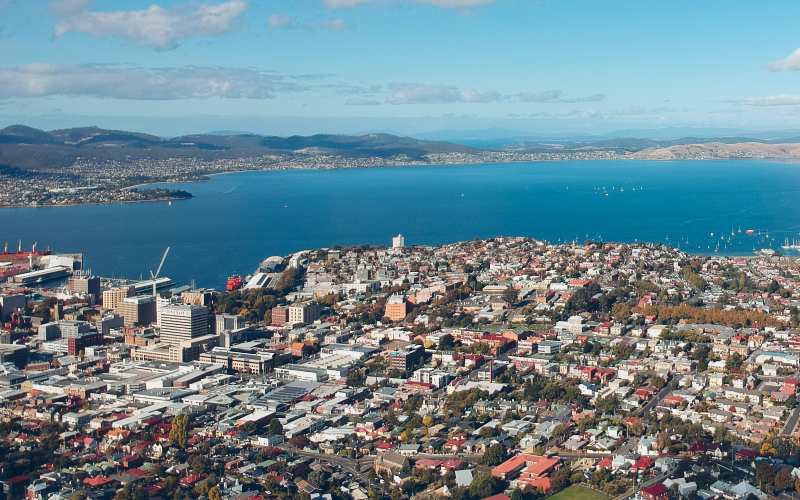Tasmania led the report on five out of eight economic indicators, including relative population growth, equipment investment, housing finance, dwelling starts, and retail trade.
There has been a reshuffling of the rankings since last quarter, with Victoria slipping to third from second overall.
Despite strict COVID lockdowns and a shutdown of retail and service businesses, Victoria still ranks first for economic growth, however.
It also ranks first on construction work done.
Buying a home or looking to refinance? The table below features home loans with some of the lowest variable interest rates on the market for owner occupiers.
| Lender | Home Loan | Interest Rate | Comparison Rate* | Monthly Repayment | Repayment type | Rate Type | Offset | Redraw | Ongoing Fees | Upfront Fees | Max LVR | Lump Sum Repayment | Extra Repayments | Split Loan Option | Tags | Features | Link | Compare | Promoted Product | Disclosure |
|---|---|---|---|---|---|---|---|---|---|---|---|---|---|---|---|---|---|---|---|---|
5.54% p.a. | 5.58% p.a. | $2,852 | Principal & Interest | Variable | $0 | $530 | 90% |
| Promoted | Disclosure | ||||||||||
5.49% p.a. | 5.40% p.a. | $2,836 | Principal & Interest | Variable | $0 | $0 | 80% |
| Promoted | Disclosure | ||||||||||
5.64% p.a. | 5.89% p.a. | $2,883 | Principal & Interest | Variable | $250 | $250 | 60% |
| Promoted | Disclosure | ||||||||||
5.64% p.a. | 5.89% p.a. | $2,883 | Principal & Interest | Variable | $248 | $350 | 60% |
| Disclosure |
Overall, the ACT ranks second; Victoria third; NSW and SA tied fourth; WA and Queensland tied sixth; and Northern Territory in last spot.
Queensland arguably has the most 'open' economy during the pandemic, reflected in its second overall ranking for retail spending, up 8.91% on decade-average levels.
However, CommBank's chief economist Craig James said that retail trade figures during the pandemic are to be taken with a grain of salt.
"Retail spending may be up sharply on a year ago, but from depressed levels," he said.
"Overall spending may still be well below 'normal'. And clearly some states such as Queensland and Western Australia traditionally have had faster economic growth rates due to historically faster population growth."
CommBank lists Queensland's weakness as relative economic growth.
The state also ranks second-worst in relative unemployment, behind NSW, and second-worst in equipment investment behind NT.
Queensland's unemployment sits at 7.7%, 26.3% above the decade average, while NSW's jobless rate is at its highest level in 22 years.
Last month, Queensland's Housing Minister Mick de Brenni cited 'economic strength' as reason for being the only state not to extend rental eviction moratoriums.
In a bright spot, despite housing market uneasiness, in seven of the states and territories, housing finance commitments are above decade averages, up from five in the previous quarter.
The outlier was the Northern Territory, with housing commitments 9.5% lower than its decade average.
Home building in Tasmania has also been strong, being the only state to record a positive result compared to the decade average.
CommBank cited population growth and lower home prices compared to the mainland as reasons for the buoyed 'dwelling starts'.
Tasmania was also tied first with South Australia for wage growth, with the wage price index up 2.4% in the June quarter.
CommBank's report also said the ACT is the only state or territory where annual new vehicle sales are above 'normal'.
The 'State of the States' reports compares states' eight economic indicators, compared to decade averages.

Ready, Set, Buy!
Learn everything you need to know about buying property – from choosing the right property and home loan, to the purchasing process, tips to save money and more!
With bonus Q&A sheet and Crossword!





.jpg)